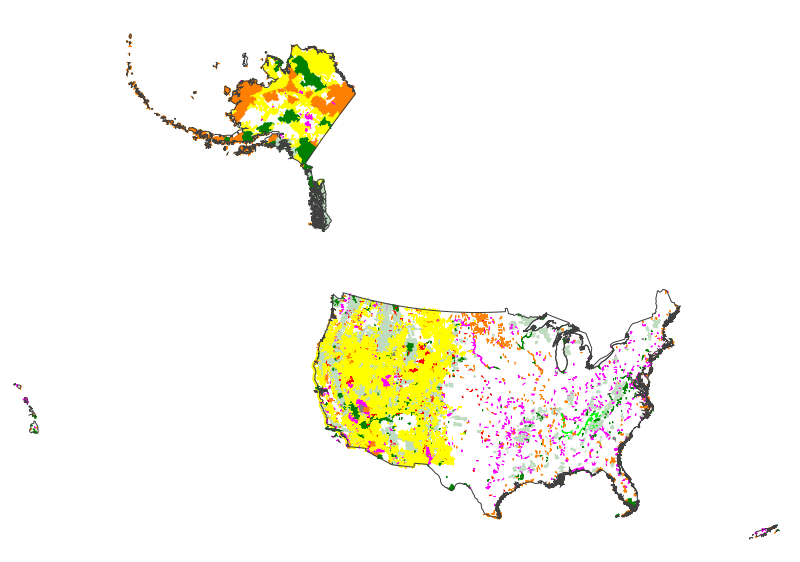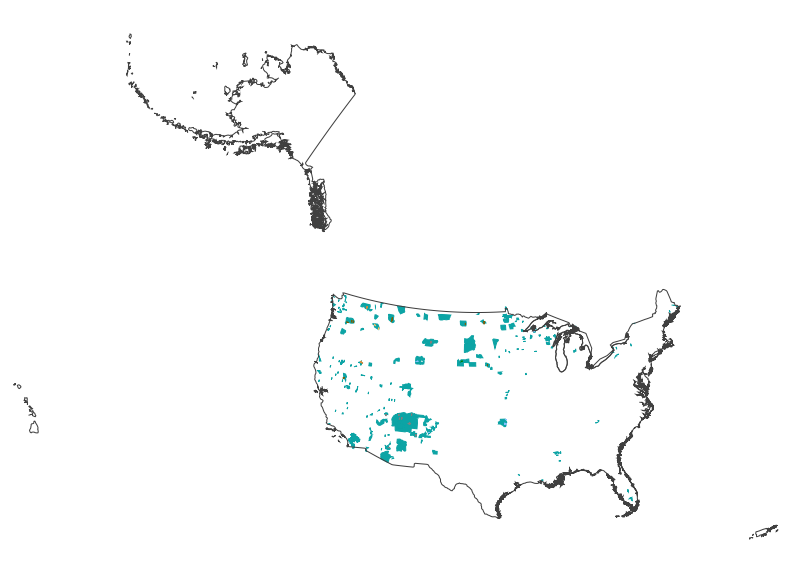Filters: Tags: society (X)
1,266 results (59ms)|
Filters
Date Range
Extensions Types
Contacts
Categories Tag Types
|

This map layer consists of federally owned or administered lands of the United States, Puerto Rico, and the U.S. Virgin Islands. For the most part, only areas of 320 acres or more are included; some smaller areas deemed to be important or significant are also included. There may be private inholdings within the boundaries of Federal lands in this map layer. Some established Federal lands which are larger than 320 acres are not included in this map layer, because their boundaries were not available from the owning or administering agency.
All roads in the western United States from the 2000 US Census Bureau 1:100,000 scale TIGER/line files.
Categories: Data;
Types: Downloadable,
Map Service,
OGC WFS Layer,
OGC WMS Layer,
Shapefile;
Tags: Arizona,
California,
Census 2000,
Colorado,
Idaho,
In an earlier article the author has argued that the turbulent history of nuclear power in Britain and the USA stems from the technology itself, and has little to do with the very different institutional arrangements made for the new technology in the two countries. Nuclear plant has various features which make its planning extraordinarily difficult. Its long lead time, large unit size, capital intensity and dependence on complex infrastructure combine to ensure that mistakes are likely to be made in planning the technology and that what mistakes do occur are expensive. This article aims to expand on the earlier one in two ways; by looking at the apparent success of the French nuclear programme which seems to run...

This map layer shows Indian lands of the United States. For the most part, only areas of 320 acres or more are included; some smaller areas deemed to be important or significant are also included. Federally-administered lands within a reservation are included for continuity; these may or may not be considered part of the reservation and are simply described with their feature type and the administrating Federal agency. Some established Indian lands which are larger than 320 acres are not included in this map layer because their boundaries were not available from the owning or administering agency.
Map containing historical census data from 1900 - 2000 throughout the western United States at the county level. Data includes total population, population density, and percent population change by decade for each county. Population data was obtained from the US Census Bureau and joined to 1:2,000,000 scale National Atlas counties shapefile.
Categories: Data;
Types: Downloadable,
Map Service,
OGC WFS Layer,
OGC WMS Layer,
Shapefile;
Tags: Arizona,
California,
Colorado,
Idaho,
Montana,
This dataset contains values on the potential number of visitors via in year ~2030 who are hikers/cyclists. This assumes a "push" factor of the number of recreationists is equal to 20.9% of population in the CBR/MBR region, which is the average participation rate of off-road recreation usage of both metro and non-metro residents of AZ, CA, NV, and UT from the National survey on recreation and the environment. Cordell et al. 2008. Visitation is assume to decline in half with each 1 hour of travel time.
This polygon feature class describes areas used for subsistence harvesting of moose in 2011 by surveyed households in Takotna, Alaska. This is a partial representation of areas used for resource harvesting in 2011.
This feature class describes areas used for subsistence harvesting of sheefish by surveyed households in Ruby, Alaska. This is a partial representation of areas used for resource harvesting.
This polygon feature class describes areas used for subsistence harvesting of brown bear in 2011 by surveyed households in McGrath, Alaska. This is a partial representation of areas used for resource harvesting in 2011.
This feature class describes areas used for subsistence harvesting of sheefish by surveyed households in Galena, Alaska. This is a partial representation of areas used for resource harvesting.
This points feature class describes areas used for subsistence harvesting of sheefish in 2011 by surveyed households in Anvik, Alaska. This is a partial representation of areas used for resource harvesting in 2011.
This feature class describes areas used for subsistence harvesting of moose in 2011 by surveyed households in Anvik, Alaska. This is a partial representation of areas used for resource harvesting in 2011.
U.S. Counties (Generalized) represents the counties of the United States in the 50 states and the District of Columbia. These data were reprojected to USA_Contiguous_Albers_Equal_Area_Conic_USGS_version and clipped to the MAR REA boundary.
This feature class describes areas used for subsistence harvesting of salmon in 2009 by surveyed households in Chuathbaluk, Alaska. This is a partial representation of areas used for resource harvesting in 2009.
This feature class describes areas used for subsistence harvesting of wolves in 2009 by surveyed households in Aniak, Alaska. This is a partial representation of areas used for resource harvesting in 2009.
This simple assessment raster is used to answer management questions (MQs) about where change agents (CAs) overlap with BLM high biodiversity sites (HBS) in the Central Great Basin and Range Ecoregion. This is a basic footprint assessment of anthropogenic features (urban development, roads, etc) intersect with the areas of HBS. The HBS were derived from source data characterizing locations with concentrated at-risk biodiversity or existing source data of a prioritization exercise that identified areas of high conservation significance. It does not model actual response or condition of the HBS to the CAs. The data intersects two primary classes of information: The CAs consist of 19 classes which represent different...
This dataset contains points that represent known locations important for aquatic recreation, including marinas and boat ramps.
This feature class describes areas used for subsistence harvesting of beaver in 2009 by surveyed households in Upper Kalskag, Alaska. This is a partial representation of areas used for resource harvesting in 2009.
Population range for each city/town. pop_5: 100,001 -1,000,000 U.S. Populated Place Points represents populated places that include census designated places, consolidated cities, and incorporated places within United States identified by the U.S. Census Bureau.
This feature class Describes the spatial location of recreation sites within or in close proximity to an administrative unit. Recreation sites are stored in three feature classes. The feature class Recreation_Site_pt represents recreation sites so small they are displayed as points, Recreation_Site_pl represents recreation sites large enough to be represented by area features, and Recreation_Site_ln represents recreation sites that are represented by lines. Any type of recreation site may be contained in any of the feature classes but any given recreation site must be contained in only one of the three feature classes. Recreation sites are grouped hierarchically. For example, a campground may be composed of many...
|